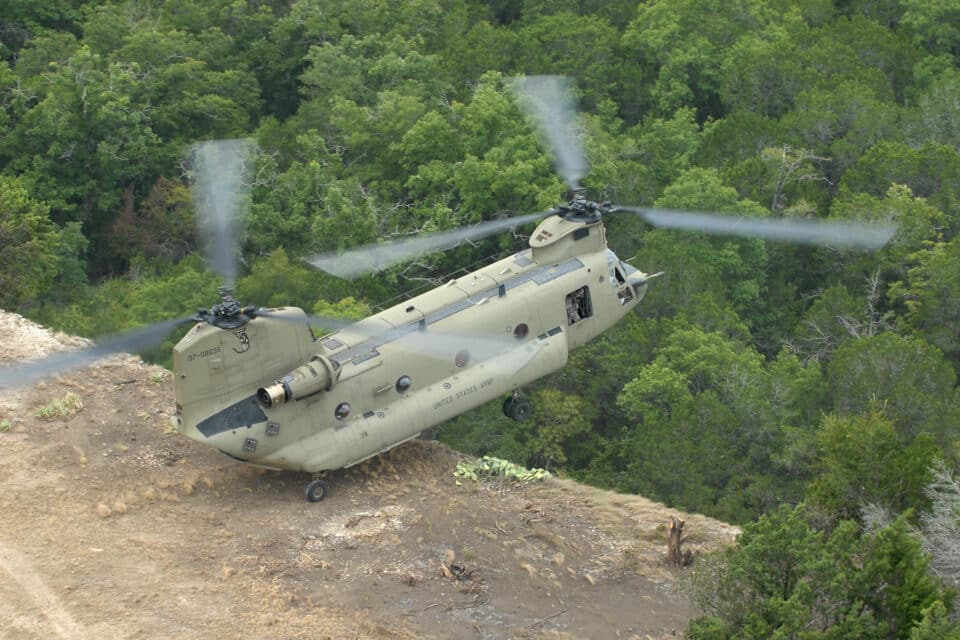Aerospace
U.S. Army Grounds Entire Fleet of Chinook Helicopters
U.S. Army grounds Boeing-made Chinook helicopters fleet

The US official grounded the entire new fleet of Chinooks that are equipped with Honeywell engines as a result of the precautions taken.
According to the most recent data, engine problems have not caused any injuries or fatalities. Depending on how long the order lasts, the grounding of the Chinook helicopters, a workhorse on the battlefield since the 1960s, might present logistical difficulties for American soldiers.
Approximately 400 Chinooks powered by Honeywell engines are being used by the US Army, according to the details. Boeing declined to respond to inquiries and sent them to the Army.
According to a Honeywell spokeswoman, the engine manufacturer collaborated with the army to find that certain O-ring components didn’t adhere to the company’s design requirements. According to him, the components were put at an Army installation during routine maintenance. The Honeywell official said the business is attempting to provide the Army with new parts, however, he declined to identify the manufacturer of the parts.
According to an Army spokeswoman, the service has found the source of the fuel leaks that led to “a few engine fires among a few” of the helicopters. She claimed that the Army is acting to remedy the problem.
India received the first batch of Chinook helicopters in February 2019. Boeing completed the delivery of 15 Chinook helicopters to the Indian Air Force in 2020.
Meet the Bell 360, the latest rival to the Sikorsky Raider X.(Opens in a new browser tab)
Both regular and special Army personnel use the Chinook, a heavy-lift utility helicopter, to transport more than forty-dozen soldiers or items. For 60 years, it has been a mainstay of the Army’s helicopter fleet.
About 15 CH-47 Chinook helicopters are in India. They have become one of the most important military tools for airlift operations in places like Ladakh and the Siachen Glaciers to support Indian forces stationed in these areas over the past few years.
IAF to induct first batch of domestically built LCH at Jodhpur (Opens in a new browser tab)
Sources : WSJ

Aerospace
When Ratan Tata was denied entry to the airfield at the Aero India show, he waited

During our visit to Aero India 2019, we had the unexpected opportunity to see Ratan Tata at the event, which was a thrilling moment for us. However, there was a surprising hiccup when the security staff didn’t allow him to enter due to a lack of a security pass.
Despite this, he remained calm and patiently waited for about 20 minutes until a member of the Tata team brought him the required pass, after which he calmly proceeded inside. It was a humbling sight, showcasing his composed demeanor even in such situations.
Ratan Tata ji is not only a renowned industrialist but also a trained pilot, holding a pilot’s license. In 2007, he became the first Indian civilian to fly the F-16 Falcon during the Aero India show in Bangalore—a proud moment for the nation.
His passion for aviation extended beyond flying, as he played a key role in shaping India’s aerospace industry. Under his leadership, Tata ventured into manufacturing and maintaining aerospace components while upholding its legacy of quality. Notably, Tata’s collaboration with Airbus to develop and manufacture the C295 aircraft is a testament to its growing influence in the sector.
-

 Aviation2 months ago
Aviation2 months agoMicrosoft Flight Simulator Raises $3 Million to Bring Back the An-225 Mriya
-

 Airlines2 months ago
Airlines2 months agoQantas Engineers Stage Walkout Over Cost of Living Concerns
-

 Airlines2 months ago
Airlines2 months agoQatar Citizens Can Travel to the United States Without a Visa
-

 Aviation2 months ago
Aviation2 months agoQatar Airways bans these new Electronic Devices on plane
-

 Airlines2 months ago
Airlines2 months agoJapan Airlines Rolls Out Free Domestic Flights to International Passengers
-

 Defence2 months ago
Defence2 months agoWhich Country Has the Largest Fleet of Fighter Aircraft?
-

 Airport2 months ago
Airport2 months agoWestern Sydney Airport Welcomes Its First Plane After 6 Years of construction
-

 Travel2 months ago
Travel2 months agoQatar Airways Launches Four Additional Flights from Amsterdam








